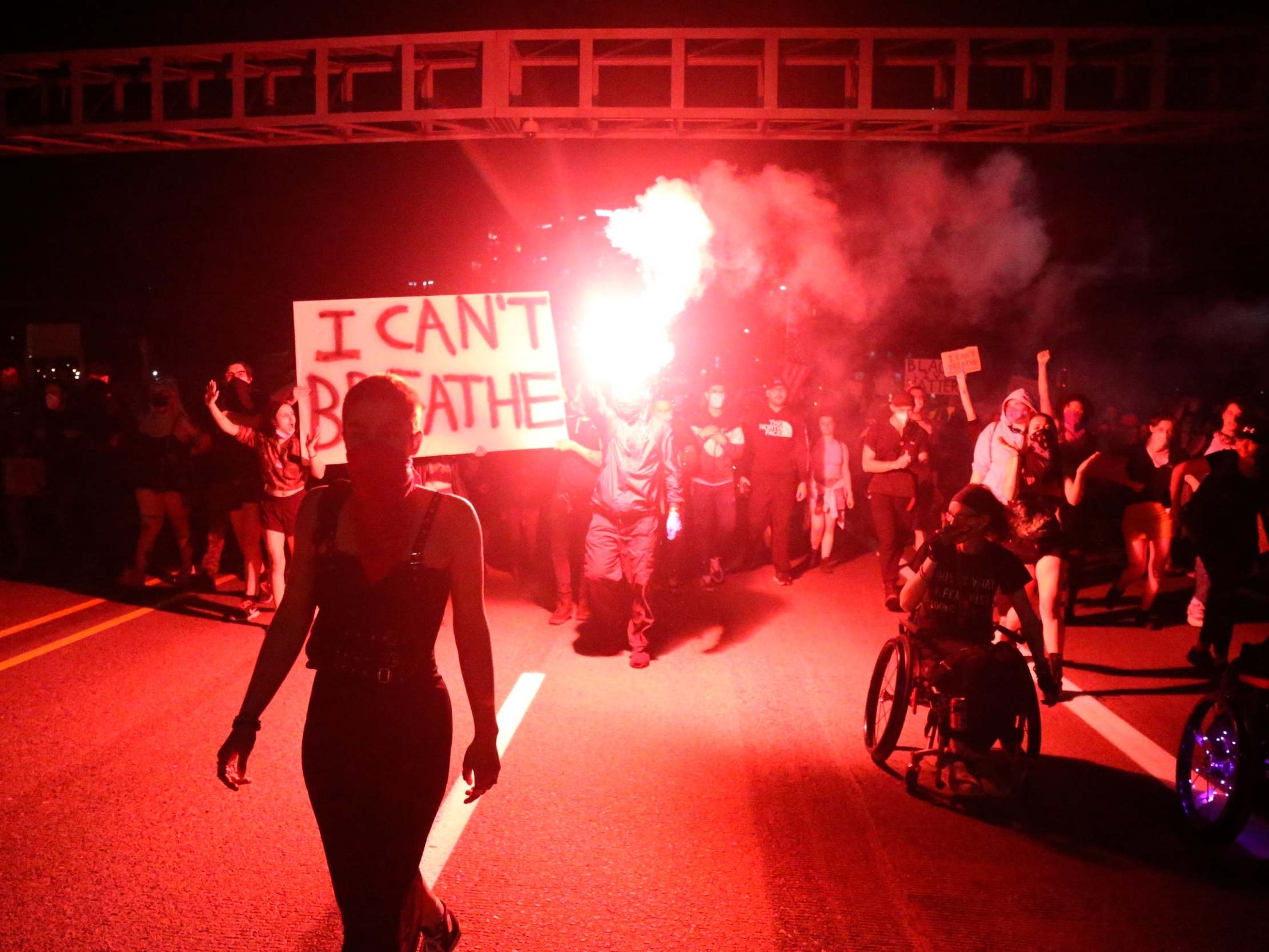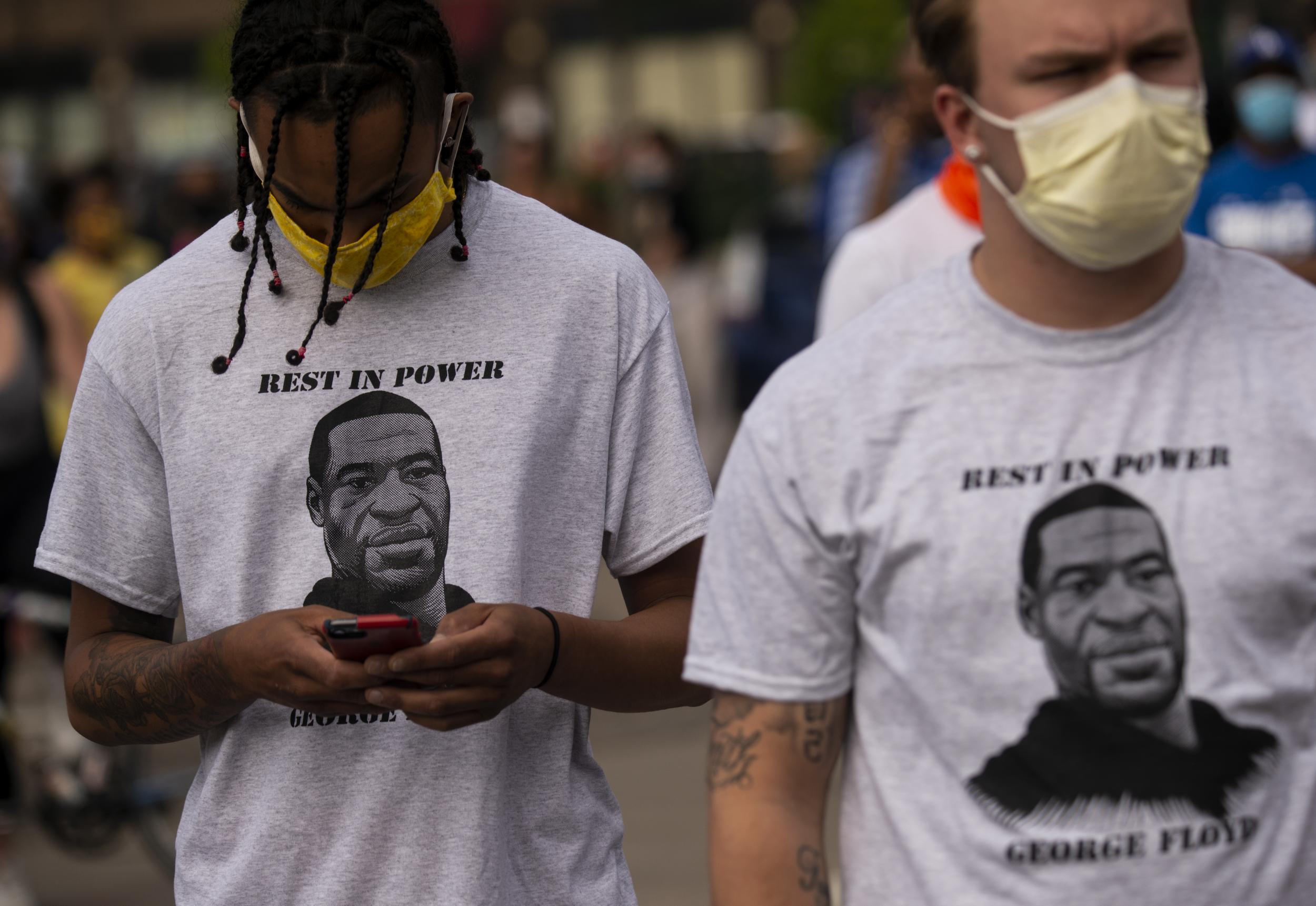George Floyd protests: What sparked clashes across US – and what happens next?
Riots spread across US as demonstrators demand justice for another black American killed by white police officer

Your support helps us to tell the story
From reproductive rights to climate change to Big Tech, The Independent is on the ground when the story is developing. Whether it's investigating the financials of Elon Musk's pro-Trump PAC or producing our latest documentary, 'The A Word', which shines a light on the American women fighting for reproductive rights, we know how important it is to parse out the facts from the messaging.
At such a critical moment in US history, we need reporters on the ground. Your donation allows us to keep sending journalists to speak to both sides of the story.
The Independent is trusted by Americans across the entire political spectrum. And unlike many other quality news outlets, we choose not to lock Americans out of our reporting and analysis with paywalls. We believe quality journalism should be available to everyone, paid for by those who can afford it.
Your support makes all the difference.Riots have spread to cities across the US five nights after the death of an unarmed black man at the hands of white police officers in the city of Minneapolis.
Protestors clashed with police in Los Angeles, New York, Dallas and Atlanta, as well as the Minnesota city itself, as demonstrators demanded justice for George Floyd, who was killed while being arrested on Monday.
In a fast-moving situation, here’s what we know so far.
What sparked the protests?
Violence erupted on Tuesday following Mr Floyd's death on Monday night.
The 46-year-old had been pulled over in his car and arrested after being reported for using a counterfeit $20 note to buy groceries. But in horrific video footage of the incident, one officer can be seen kneeling on the former bouncer's neck as he lies, handcuffed and without struggling, on the pavement.
Derek Chauvin keeps his knee pressed down despite the father-of-one clearly gasping for breath and telling officers: “I can’t breathe”. The officer did not release the hold for almost nine minutes - and a full two minutes after Mr Floyd had fallen unconscious.
He died a short time later.
A medical examiner has since noted that Mr Floyd had underlying heart conditions and the combination of these conditions, possible intoxicants in the body and the effects of the restraint "likely contributed to his death".
Initial police claims that he had resisted arrest appear to have since been contradicted by CCTV showing apparent compliance with officers.
How did the clashes develop?
As footage of the arrest went viral and outrage grew, a relatively small protest in Minneapolis on Tuesday developed into a sprawling demonstration by Wednesday night with hundreds of people marching on the police station where Mr Chauvin was based.
There, officers dressed in riot gear came out to meet them, resulting in explosive clashes.
Videos showed protesters throwing rocks and bottles at police, while they returned fire with teargas, flash bombs and rubber bullets.
By Thursday, with police appearing to lose control of the situation, looting was being reported across parts of Minneapolis and twin city Saint Paul. A police station was set ablaze.
An incendiary tweet by Donald Trump – “when the looting starts, the shooting starts” – did little to calm the situation: on Friday, the protests spread across the US.
Demonstrators clashed with officers in New York City, Washington DC and Dallas. Many chanted Mr Floyd’s last words, “I can’t breathe”. In Atlanta, a state of emergency was declared as cars were set alight and buildings smashed into. In Washington, the White House itself was temporarily placed under lockdown.
Back in Minneapolis, protesters defied an 8pm curfew and took control of the police station once more.
As the National Guard was called in, State Governor Tim Walz described the situation as "chaotic, dangerous and unprecedented".

Did anything else prompt the protests?
In short: decades of police brutality disproportionately meted out by white officers against black Americans.
Mr Floyd’s death came fast on the heels of the killing of Breonna Taylor in March. The 26-year-old medical technician was shot eight times in her own bed by officers serving a “no-knock” warrant for a narcotics investigation in Louisville, Kentucky.
It also comes after the killing of Ahmaud Arbery, a 25-year-old who was jogging in his neighbourhood when he was shot and killed by two white men, a 64-year-old father and his 34-year-old son. Video footage of the murder sparked demonstrations and international condemnation.
How have authorities responded?
With Donald Trump appearing to demand violence be met with violence, others have stepped in to fill the leadership vacuum.
Mr Walz suggested he recognised the riots were about more than a single issue and connected to wider structural injustices.
“The ashes are symbolic of decades and generations of pain and anguish unheard,” he said. “George Floyd’s death should lead to justice and systemic change, not more death and destruction.”
Mr Chauvin, meanwhile, was fired on Tuesday and arrested on Friday afternoon. He has since been charged with third-degree murder and second-degree manslaughter.
Protestors have demanded his three former colleagues who stood and watched throughout – all now dismissed from the Minneapolis Police Department – should also be criminally investigated.
And Mr Floyd’s family?
Sister Bridgett Floyd has described his death has “heart-breaking”.
In a live interview with NBC, she said: “I would like for those four officers to be charged with murder because that’s exactly what they did, they murdered my brother.”
In a statement, the family’s lawyer Ben Crump added that the family wanted “peace in Minneapolis, but they know that black people want peace in their souls and that until we get #JusticeForFloyd there will be no peace”.
He added: “We also cannot sink to the level of our oppressors and endanger each other as we respond to the necessary urge to raise our voices in unison and outrage.”
Join our commenting forum
Join thought-provoking conversations, follow other Independent readers and see their replies
Comments